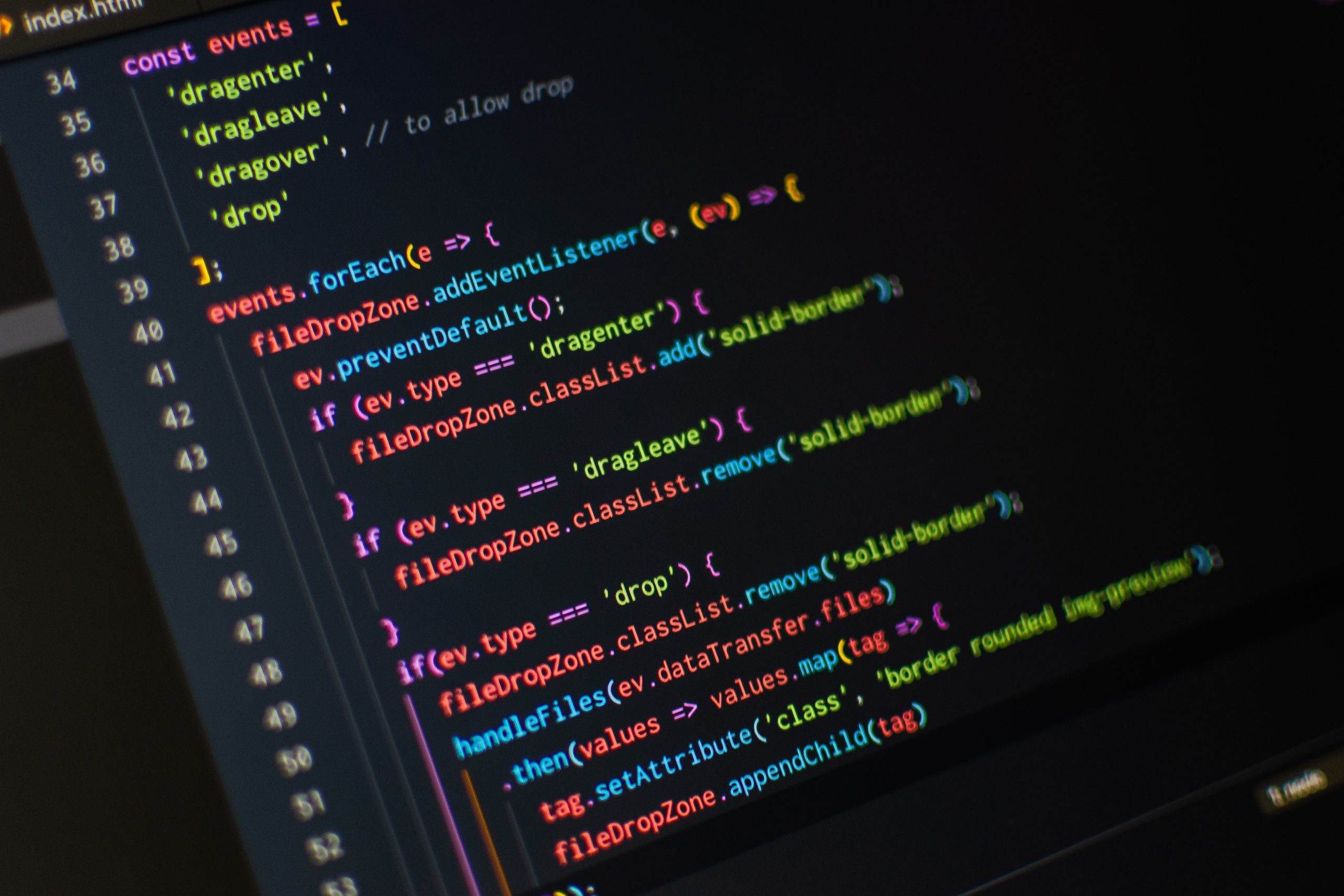What are Syntax Errors?
Syntax errors are errors in the structure or formatting of a programming language. When writing code, it is essential to adhere to the correct syntax rules set by the programming language. Syntax errors occur when the code violates these rules, leading to a failure in the compilation or execution of the program.
Think of coding as writing a sentence in a language that the computer understands. Just like a grammatical error can make a sentence incomprehensible, a syntax error in code can render it unreadable to the computer. This can result in the program not functioning as expected or not running at all.
Syntax errors can manifest in various ways, depending on the programming language. Some common syntax errors include missing semicolons, incorrect indentation, unmatched parentheses or brackets, misspelled keywords, and improper use of operators.
For example, in Python, forgetting to add a colon at the end of a conditional statement or a loop will result in a syntax error. Similarly, in HTML, omitting a closing tag or using an invalid tag will lead to syntax errors.
Syntax errors are typically identified by the development environment or compiler during the code’s compilation phase. The compiler detects the violation of syntax rules and flags them as errors, preventing the program from executing until the errors are resolved.
Examples of Syntax Errors
Syntax errors can occur in different programming languages and can take many forms. Here are some common examples of syntax errors:
-
Missing Semicolon:
In languages like JavaScript or C++, forgetting to add a semicolon at the end of a statement can result in a syntax error. For example:
int x = 5 printf("The value of x is: %d", x);This code will produce a syntax error because the semicolon is missing after the variable declaration.
-
Unmatched Parentheses:
In languages like Python or Ruby, failing to close a pair of parentheses can lead to a syntax error. For instance:
if (x == 5: print("x is equal to 5")This code will result in a syntax error since the closing parenthesis is missing in the if statement.
-
Misspelled Keyword:
Spelling mistakes in keywords can cause syntax errors. For example, in JavaScript:
for (let i = 0; i < 10; i++){ console.log(i); }This code will generate a syntax error because the less than sign is misspelled as “<” instead of “<“.
-
Improper Indentation:
Languages like Python rely on proper indentation to determine code blocks. Failing to indent or indenting incorrectly can lead to syntax errors. Here’s an example:
if x == 5: print("x is equal to 5")This code will produce a syntax error because the print statement is not indented.
These are just a few examples of syntax errors that programmers may encounter while writing code. It is important to pay close attention to the language’s syntax rules and carefully review the code for any errors to ensure smooth execution.
Why are Syntax Errors a Problem?
Syntax errors can have significant implications on the functionality and performance of a program. Understanding why they are a problem is crucial for programmers to develop robust and error-free code.
Firstly, syntax errors prevent successful execution of the program. When a syntax error is present in the code, the compiler or interpreter cannot interpret the instructions correctly. This leads to a failure in the compilation or execution of the program, resulting in an error message or unexpected behavior.
Syntax errors can also create confusion and frustration for programmers. When faced with a syntax error, it may not always be immediately apparent what caused the error or where it occurred. This can lead to significant time spent on debugging and troubleshooting, especially in complex or lengthy codebases.
In addition, syntax errors can impact the readability and maintainability of the code. Writing clean and well-formatted code is essential for collaboration and future development. Syntax errors, such as inconsistent indentation, missing punctuation, or incorrect use of language-specific conventions, make code harder to read and understand, making it more prone to further errors and difficult to maintain.
Furthermore, syntax errors can result in security vulnerabilities. Incorrectly implemented code due to syntax errors could introduce weaknesses that can be exploited by malicious users. For example, forgetting to sanitize input or properly handle exceptions due to syntax errors can lead to vulnerabilities like SQL injection or buffer overflow.
Lastly, syntax errors can affect the overall performance of a program. Even a small syntax error can cause the program to crash or run inefficiently. Identifying and fixing syntax errors is crucial for ensuring smooth program execution and optimal resource utilization.
Common Causes of Syntax Errors
Syntax errors in programming code can arise from various causes. Identifying these common causes can help programmers prevent or resolve syntax errors more efficiently.
-
Misplaced Punctuation:
One of the most frequent causes of syntax errors is missing or misplaced punctuation. Forgetting a closing bracket, parenthesis, or semicolon can lead to compilation errors. For example:
if (x == 5 { // code here }In this example, the closing bracket is missing after the condition, resulting in a syntax error.
-
Misspelled Keywords or Variable Names:
Misspelling keywords or variable names can lead to syntax errors. Programming languages are case-sensitive, so even a small typo can cause issues. For instance:
for (let i = 0; i < 10; i++){ console.log(i); }In this code snippet, "<" is misspelled as "<" instead of the correct syntax "<".
-
Incorrect Indentation:
Some programming languages, such as Python, use indentation to define code blocks. Incorrect indentation can result in syntax errors. Consider this example:
if x == 5: print("x is equal to 5")In this code, the print statement is not indented correctly, leading to a syntax error.
-
Improper Operator Usage:
Using operators incorrectly can also cause syntax errors. For example, using assignment operators instead of equality operators in a conditional statement:
if x = 5 { // code here }In this code, the single equals sign (=) should be replaced with a double equals sign (==) to compare the value of x with 5.
-
Missing Quotation Marks:
In languages such as JavaScript or Python, failing to include quotation marks around strings can lead to syntax errors:
console.log(Hello, world!);The string "Hello, world!" should be enclosed in quotation marks (either single or double) to avoid a syntax error.
These are just a few common causes of syntax errors. Understanding these causes and being mindful of them while coding can help prevent syntax errors and save time during the debugging process.
How to Identify Syntax Errors
Identifying syntax errors in programming code is crucial for debugging and ensuring the smooth execution of a program. Here are some approaches to help identify syntax errors:
-
Read Error Messages:
When a syntax error occurs, the compiler or interpreter generates an error message that provides important information about the error. It typically includes the line number, error type, and a brief description. Reading and understanding these error messages can point you to the specific line of code where the syntax error occurs.
-
Inspect Code for Typos and Missing Punctuation:
Review your code carefully, paying attention to spelling errors and missing or misplaced punctuation. Even a small typo or misplaced symbol can cause a syntax error. Check for closing brackets, parentheses, semicolons, and quotation marks to ensure they are used correctly and consistently throughout the code.
-
Use an Integrated Development Environment (IDE):
IDEs often come with syntax highlighting, which can visually indicate potential syntax errors by highlighting them in different colors or shading. This helps you quickly identify problematic areas in your code. The IDE might also provide autocompletion or suggest fixes for common syntax errors, further assisting you in spotting and resolving them.
-
Use Linting Tools:
Linting tools are software programs that analyze and check your code for potential errors, including syntax errors. They can help identify syntax errors and provide suggestions for fixing them. Popular linting tools include ESLint for JavaScript and Pylint for Python.
-
Take Advantage of Code Review:
Another effective approach to identifying syntax errors is to have fellow programmers or experienced developers review your code. Another set of eyes can catch mistakes that you might have overlooked. Code reviews not only help identify syntax errors but also improve the quality and efficiency of your code as a whole.
By leveraging these techniques, programmers can effectively identify syntax errors, leading to faster debugging and improved code quality.
Tips for Avoiding Syntax Errors
Avoiding syntax errors is essential for writing clean and error-free code. By following some best practices and incorporating good coding habits, you can reduce the chances of encountering syntax errors. Here are some tips to help you avoid syntax errors:
-
Double-Check Syntax Rules:
Take the time to familiarize yourself with the syntax rules of the programming language you're using. Read the documentation and reference materials to understand how the language expects code to be structured. This will help you write code that adheres to the correct syntax and prevent common errors.
-
Pay Attention to Punctuation:
Ensure that you use appropriate punctuation marks, such as brackets, parentheses, semicolons, and quotation marks, in the right places. Make sure they are properly balanced and closed. Double-check for missing or extra punctuation as these can result in syntax errors.
-
Use Consistent Indentation:
If your programming language relies on indentation, be consistent with your indentation style throughout your code. This will make it easier to identify missing or misaligned code blocks. Using an automated formatter or an IDE with built-in auto-indentation features can help maintain consistent and correct indentation.
-
Utilize Code Editors with Syntax Highlighting:
Work in code editors and Integrated Development Environments (IDEs) that offer syntax highlighting. Syntax highlighting visually differentiates elements of your code by color, making it easier to spot syntax errors and potential issues as you write your code. This can significantly reduce the likelihood of making syntax-related mistakes.
-
Test Small Code Segments:
Instead of writing lengthy sections of code all at once, break it down into smaller segments and test each segment individually. By testing smaller code chunks as you go, you can quickly identify and fix any syntax errors that may occur before they become more challenging to trace.
-
Regularly Use Linting Tools:
Integrate linting tools into your development workflow. These tools can automatically analyze your code and highlight potential syntax errors, style violations, and other issues. Running linters regularly can help you identify and fix syntax errors early on, promoting cleaner code and reducing the risk of encountering more significant errors.
-
Perform Code Reviews:
Engage in code reviews with peers or experienced developers. Having others review your code can help catch syntax errors that you may have missed. Code reviews also facilitate knowledge sharing and provide opportunities for learning and improving your coding skills.
By following these tips and continuously honing your coding practices, you can minimize the occurrence of syntax errors in your code and develop more robust and readable programs.


